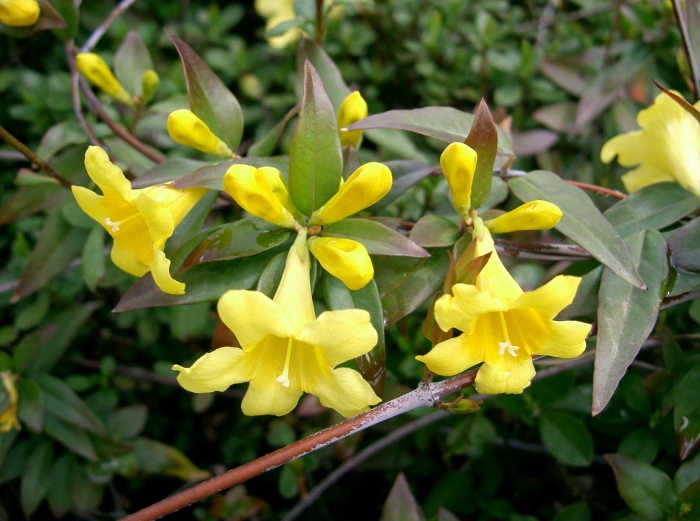Evening Trumpetflower
(Gelsemium sempervirens)
Evening Trumpetflower (Gelsemium sempervirens)
/
/

KENPEI
CC BY-SA 3.0













































































Estimated Native Range
Summary
Evening Trumpetflower is valued for its aromatic, showy flowers and is often used to adorn arbors, trellises, and walls, especially in warmer regions. It has received the Royal Horticultural Society’s Award of Garden Merit, indicating its excellence for garden use. While it can tolerate mild and coastal UK climates, it requires protection or greenhouse cultivation in colder areas. For optimal growth, it prefers a sheltered location with full sun to light shade, moderate watering, and well-drained soil. It is relatively low-maintenance but can be susceptible to pests like aphids and mealybugs. It is also toxic if ingested, so caution is advised when planting in areas accessible to pets and children.CC BY-SA 4.0
Plant Description
- Plant Type: Vine
- Height: 12-20 feet
- Width: 3-6 feet
- Growth Rate: Rapid
- Flower Color: Yellow
- Flowering Season: Winter, Spring
- Leaf Retention: Evergreen
Growth Requirements
- Sun: Full Sun, Part Shade
- Water: Medium
- Drainage: Slow, Medium, Fast
Common Uses
Bee Garden, Bird Garden, Butterfly Garden, Deer Resistant, Drought Tolerant, Fragrant, Hummingbird Garden, Low Maintenance, Rabbit Resistant, Salt Tolerant, Showy Flowers
Natural Habitat
Open woodlands, forest edges, and scrub areas in the Southeastern USA, extending into Central America
Other Names
Common Names: Carolina Jasmine, Evening Trumpet-Flower, Woodbine, Gelsemium, Yellow Jessamine, Giftjasmin, Carolina Jessamine
Scientific Names: , Gelsemium sempervirens, Gelsemium nitidum, Bignonia sempervirens, Bigonia sempervirens, Gelsemium lucidum, Gelsemium nitidum var. inodorum, Jeffersonia sempervirens, Lisianthius sempervirens, Lisianthius volubilis,
GBIF Accepted Name: Gelsemium sempervirens (L.) J.St.-Hil.